Pigs are one of the numerous mammals raised for many purposes. These mammals provide humans with meat, lard, and even hides that are used to make leather goods. But like other animals, they still face the danger of being hunted and killed by predators.
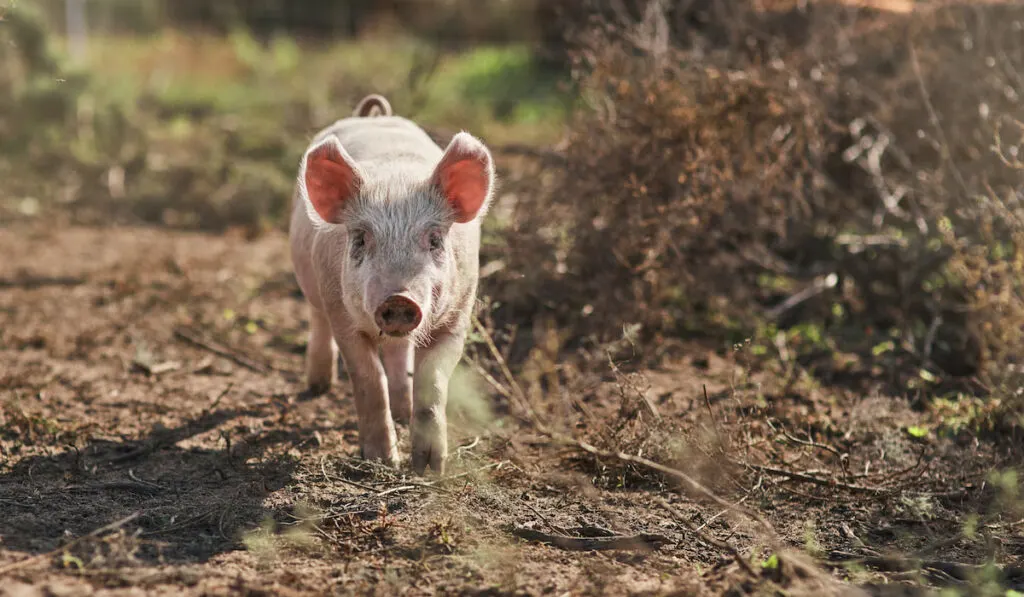
This is true, especially for wild pigs that live and roam freely in the wild. Unlike domesticated pigs, wild pigs are prone to encounter attacks from vicious carnivores that prey on them. They don’t live in a fenced or guarded environment. But what animals attack and eat pigs?
In this article, we have compiled some of the most common predators of pigs. Let’s dive deeper to know more.
Table of Contents
1. Dogs
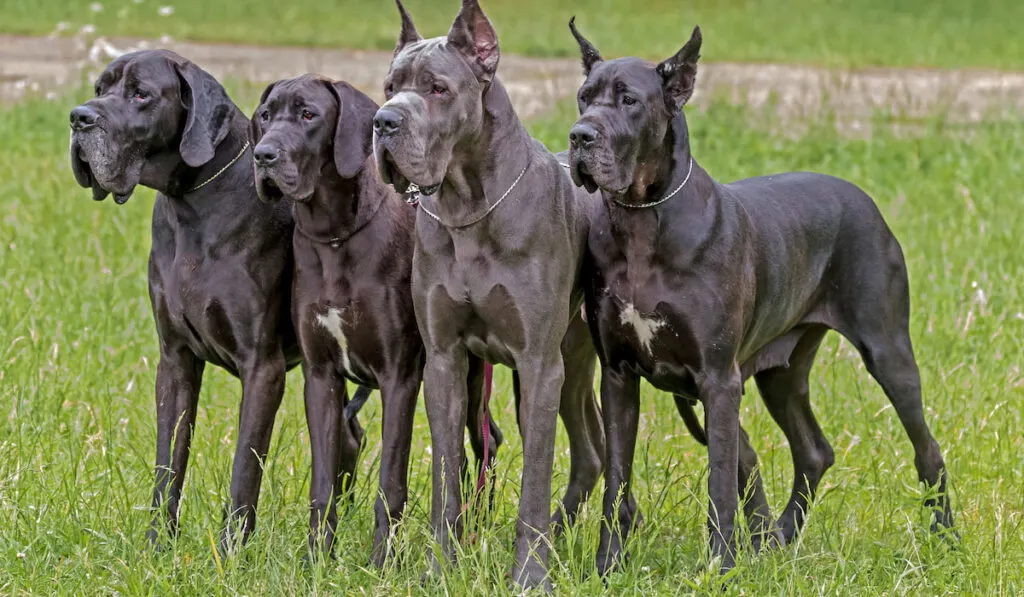
It is no surprise that dogs are human’s best friends. However, this notion only applies to domesticated dogs that are trained as house pets. Feral dogs are violent and hungry enough to kill and eat pigs.
In addition, hunting dogs are also capable of killing pigs, especially when they are big and swift enough to hunt these mammals. Hunters called these types of dogs boarhounds.
Not all dogs are equipped and suitable for pig hunting. Only breeds that are strong, ferocious, perspicacious, yet obedient are trained to be boarhounds.
Some breeds that are used to hunt and catch pigs are Bloodhounds, Terriers, and Daschunds. Bigger dogs like Bloodhounds are trained to catch wild boars that move in groups while smaller breeds like Daschunds are better at chasing lone pigs.
2. Wolves
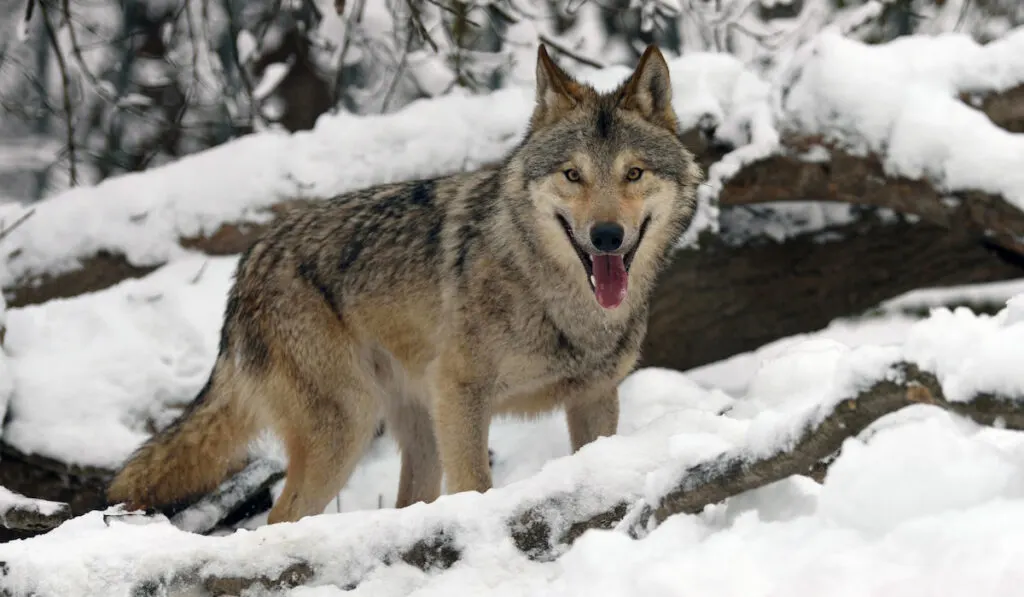
Wolves are large predators that thrive on carnivorous diets. From large herbivores to small mammals, these apex predators can rip and tear their prey apart effortlessly.
In the wild, wolves will target both solitary wild boars and boars that move in groups.
Wolves usually move in packs. Hence, they can outnumber their prey pretty easily. For instance, grey wolves that inhabit the Baltic regions usually target smaller adult boars and piglets. Once in a while, they will try to make a move on fully-grown boars.
But most of the time, their prey are weaker and smaller pigs. This is probably due to the fact that bigger adult boars are capable of protecting themselves from these ruthless predators.
3. Coyotes
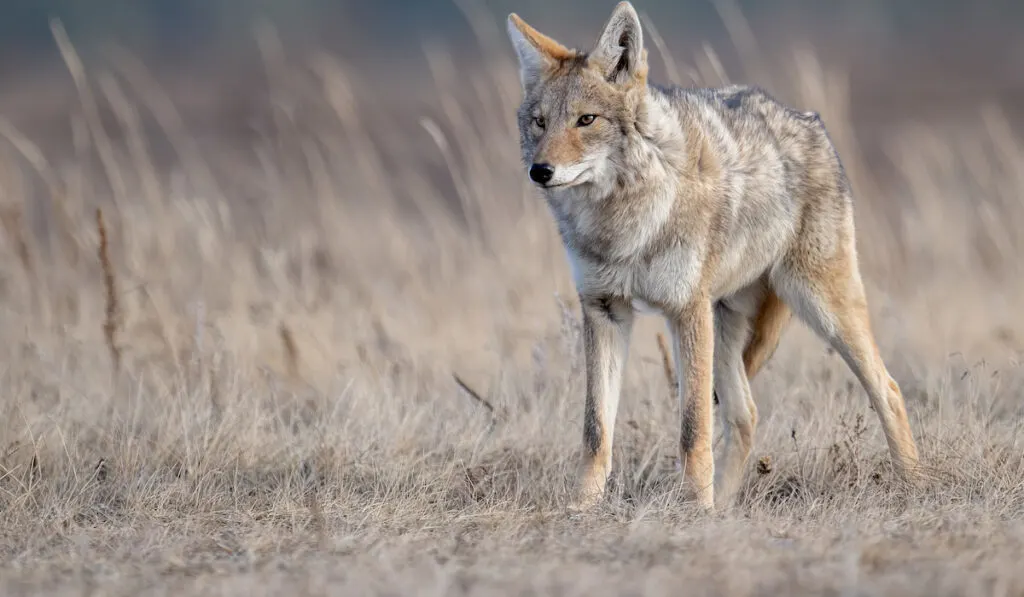
Considered one of the famous wild dogs of North America, coyotes are no strangers to any pig breeders and livestock owners. Although they are much smaller than wolves, these canids can weigh as heavy as 50 pounds (22.6 kilograms) and run up to 40 miles per hour (64 kilometers per hour).
Although they aren’t as strong as wolves, there is no reason why coyotes can’t take down pigs. They just have to wait for the right moment to attack. Piglets, smaller pigs, and sick pigs are some of the potential prey of coyotes.
Coyotes also move in packs, especially in the winter and fall. So, it would be no problem for these animals to hunt and kill pigs.
4. Lions
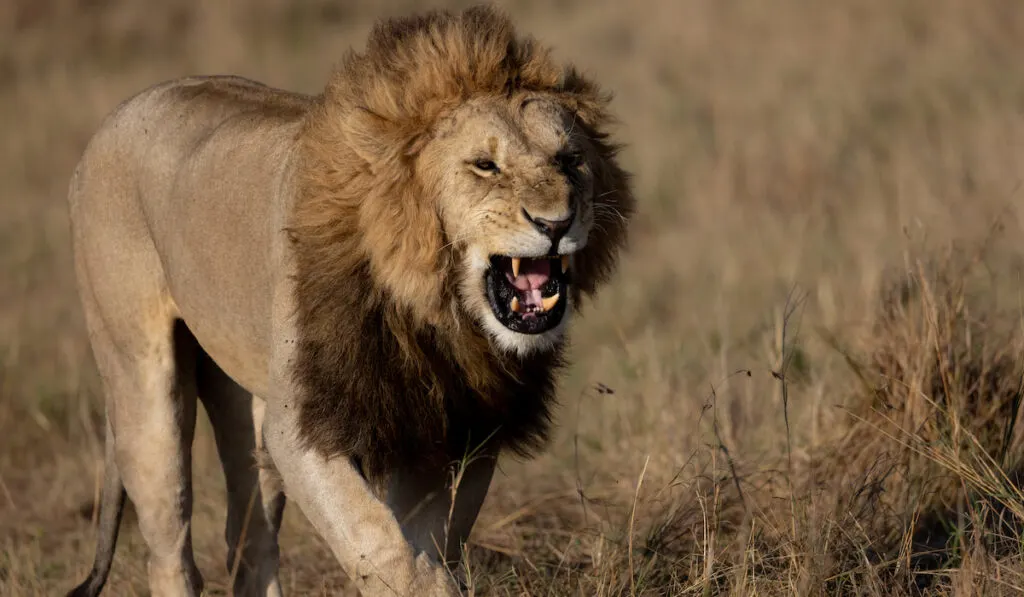
Dubbed kings of the jungle, lions are one of the apex predators that live on carnivorous diets. But contrary to popular notion, lions don’t live in the jungle. They are found exclusively in their native habitat in the African savanna.
Another interesting fact about lions is that females are considered better hunters than males. However, this doesn’t mean that male lions don’t hunt for food.
But male lions prefer to hunt in a group with a few females and their cubs. Female lions are also much faster and better at leading their hunting groups.
Lions can eat up to 70 pounds (32 kilograms) of meat in one sitting! In the savanna, warthogs are one of the famous prey of lions.
These hogs are prone to lion attacks when they move in small groups or roam very closely to lions’ habitat.
5. Black Bears
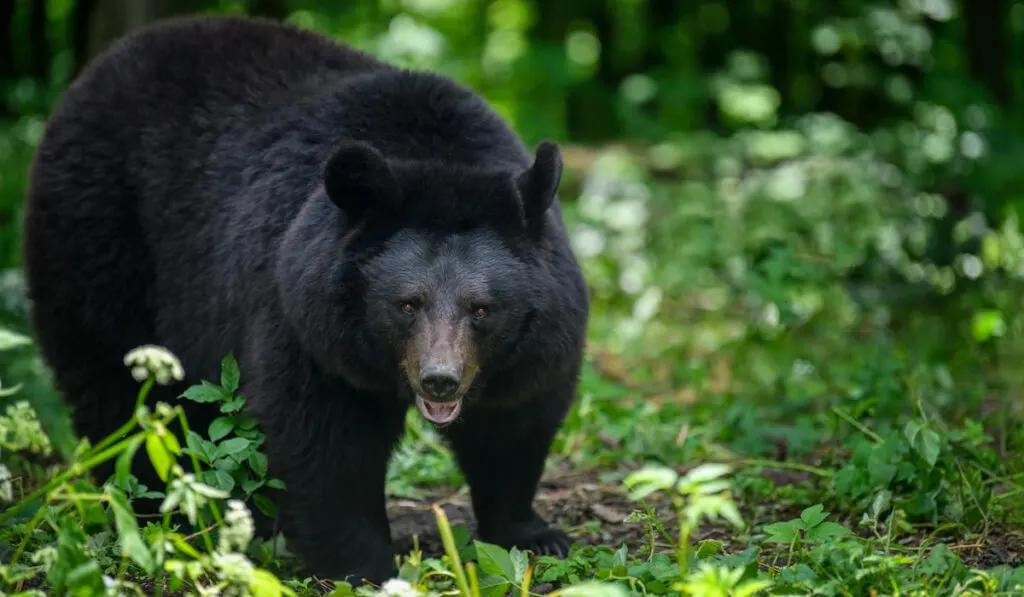
Like pigs, black bears are also omnivores that eat almost anything. These ferocious bears are considered a threat to both domesticated and wild pigs. Black bears survive by eating fruits, plants, and also meat on a daily basis.
However, if there’s a scarcity of food or resources around them, these animals are intelligent enough to look and hunt for food outside of their habitats.
Black bears can attack and kill wild hogs of all sizes and ages.
There was one incident where these animals took the opportunity and killed wild hogs that were trapped in nylon net traps. At first, these live traps were used to control the population of wild hogs near the Great Smoky Mountains National Park.
But being intelligent creatures, those bears didn’t have any problem hijacking the traps just to get their easy source of meat.
6. Hyenas

Hyenas are categorized into three types, which are spotted, striped, and brown. These carnivores are native to Africa, Central Asia, the Middle East, and India. They are also considered one of the natural enemies of lions.
These animals rarely move alone. In fact, hyenas are territorial creatures that move in groups called clans.
On average, hyenas weigh around 77 to 176 pounds (35 to 80 kilograms) and live up to 20 years. In the African savanna, hyenas prey on warthogs. They also have to compete with lions to hunt and catch these wild hogs.
Striped hyenas also hunt wild boars and feed on their meat. For instance, striped hyenas in the Indian subcontinent prey on many medium-sized animals including wild boars. But they also have to compete with other large carnivores such as leopards and tigers.
7. Tigers
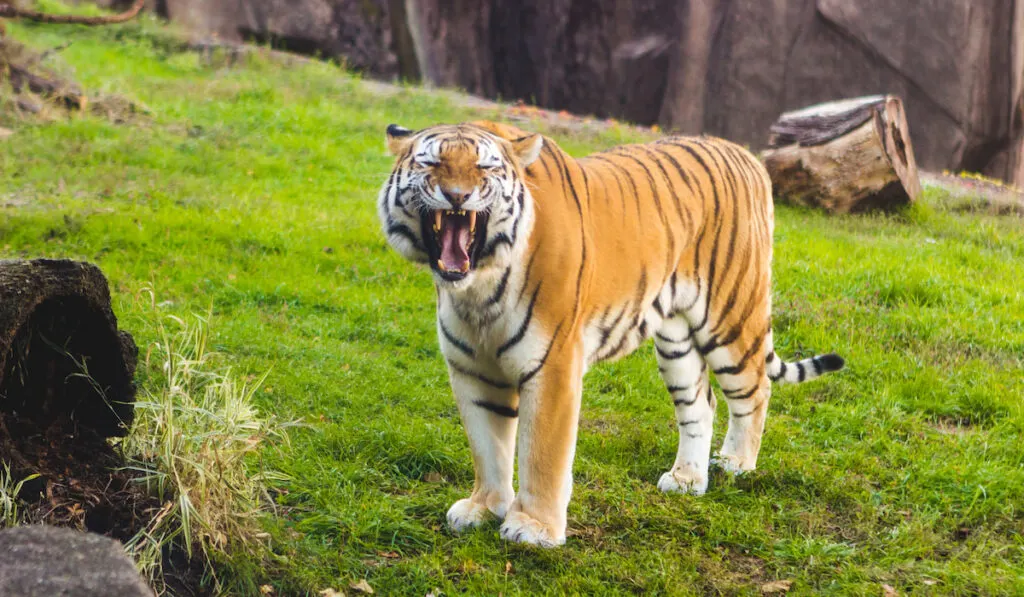
Tigers are one of the strongest predators that hunt different types of animals in their natural habitat. Being solitary hunters, they always hunt alone, prowling and waiting patiently in hidden places before attacking their targets.
No matter how big or small their prey is, tigers don’t discriminate when they are hungry and bloodthirsty. In fact, they can consume up to 88 pounds (40 kilograms) of meat in one sitting!
There are many types of tigers that exist all over the world such as Bengal, Malayan, Siberian, Indochinese, and Sumatran tigers.
As long as they share the same habitats as wild boars, there’s no reason why they won’t hunt and kill those animals.
8. Leopards
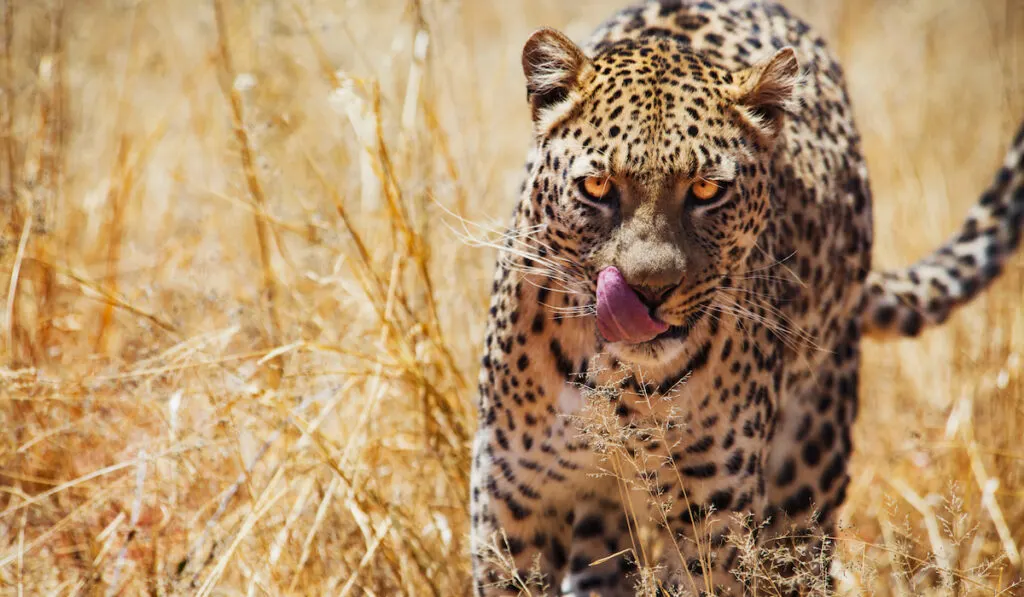
Leopards are native to the African savanna, Central Asia, and India. These large cats possess yellowish-golden fur and dark-spotted bodies, athletic frames, strong paws and jaws, and an acute sense of sight and smell.
Being one of the apex predators, leopards are agile and swift enough to climb and move from the ground up to higher branches.
Leopards can also blend with their surroundings, waiting patiently before attacking their prey by surprise. Even fast animals like warthogs and wild boars would have a hard time trying to escape these felines.
Oftentimes, leopards will drag and carry the carcasses of their prey up trees. It doesn’t matter if the prey is big or small, up it goes so as to escape the reach of its competitors. These carnivores are more than capable of doing feats that other large cats can’t do.
9. Crocodiles
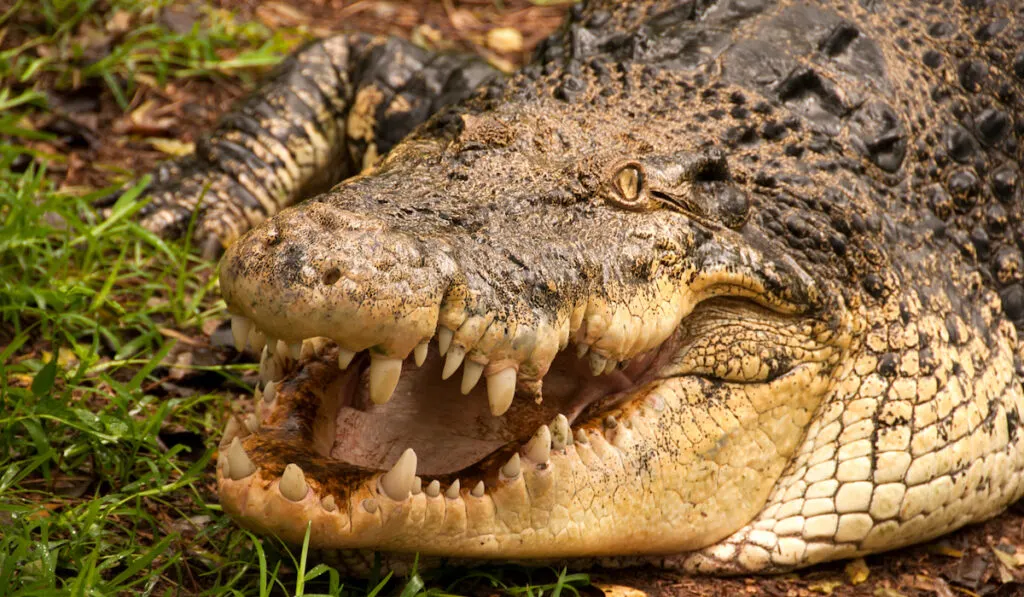
In the water, pigs and wild boars also face much greater danger when they are caught in the deadly jaws of crocodiles. These large reptiles are well-known predators that eat and kill almost anything that crosses their path.
Crocodiles are considered lazy hunters. However, they have smart tactics that are effective enough to catch pigs and other animals. In the wild, wild pigs need water on a daily basis.
Hence, these animals have to pay regular visits to nearby lakes and rivers. However, danger lurks in these places since large crocodiles often inhabit such types of environments.
When they get too close to the water to drink, these carnivorous reptiles will swim slowly to get close to the pigs. In the blink of an eye, they are bitten and caught by the crocodiles. The moment crocodiles drag their prey into the water, there’s little or no hope for those animals to survive.
10. Alligators

Similar to crocodiles, alligators are widely known to be one of the most dangerous reptiles that devour all types of animals including pigs.
Alligators can definitely bite, grab, and drag pigs into the water before drowning and killing them, regardless of the size of the pigs.
However, some people tend to confuse alligators with crocodiles, especially when they watch footage of these animals killing their prey. Although they are closely related to one another, both of these reptiles come entirely from different species.
The easiest way to differentiate between alligators and crocodiles is by looking at their snouts.
Alligators have wider and curvy snouts while crocodiles’ snouts are much pointier and sharper. You will also find alligators inhabiting freshwater regions whereas crocodiles live in both freshwater and saltwater areas.
11. Eagles
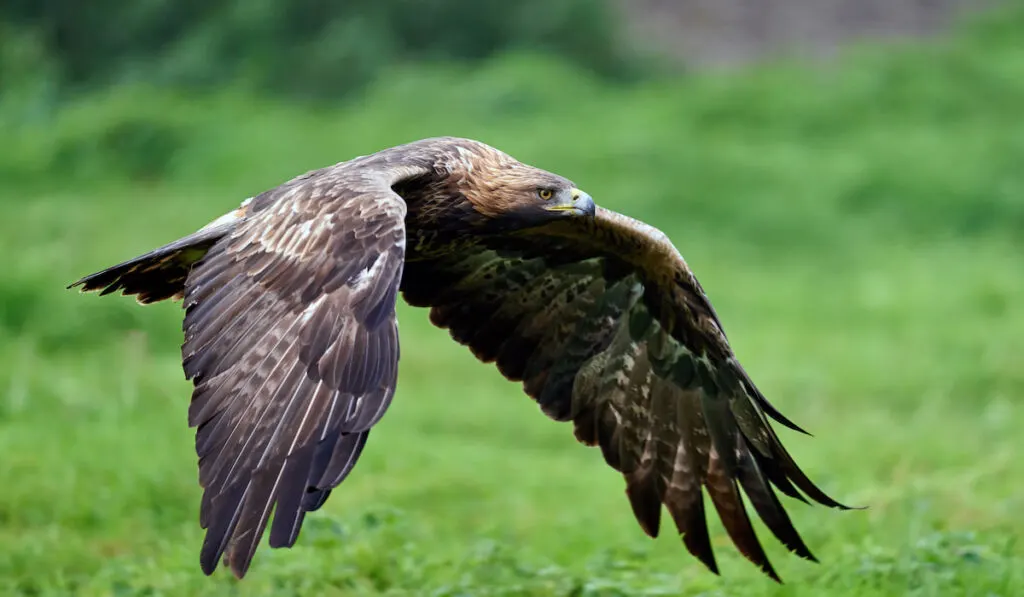
Eagles are well-known birds of prey that symbolize many values such as courage, wisdom, bravery, and success. In fact, one species known as the bald eagle has been used continuously in the United States’ national emblem since 1782. They are also considered sacred animals by Native Americans.
These large birds are distributed in many regions such as the Americas, Australia, Eurasia, and Africa. They are carnivorous birds that feed on small and vulnerable animals.
Although eagles frequently catch and eat fish, these birds have a record of killing and eating wild piglets.
This can happen when these piglets aren’t protected by their mothers. Unlike adult pigs, piglets aren’t always alert to the danger in their surroundings. So, they are always in danger of attack from predators.
12. Bobcats
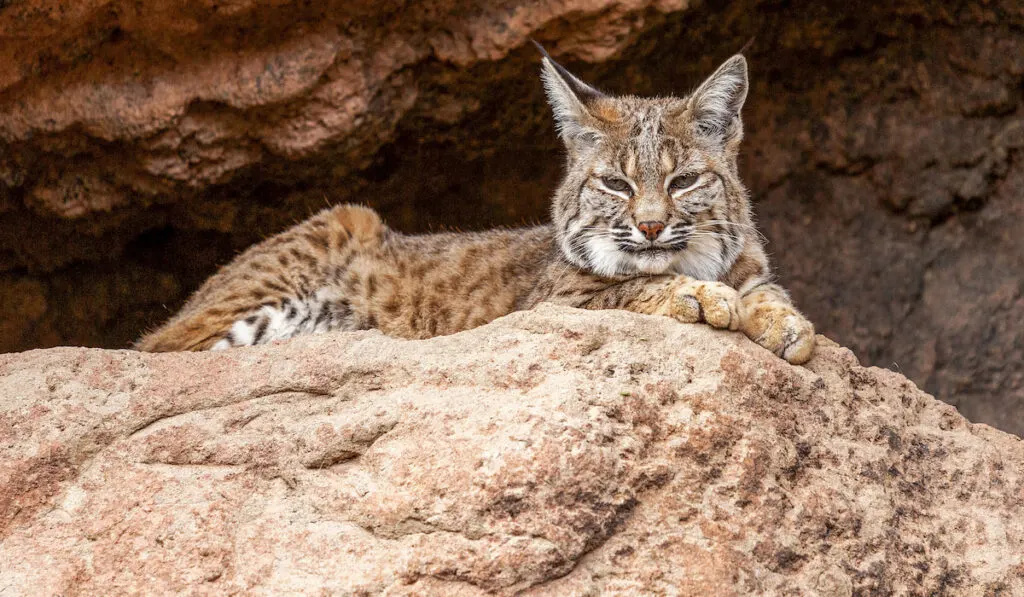
These felines aren’t like your typical house cats that are easily tamed with toys and food. They thrive outdoors in the wild and live in hidden areas such as the hollow of dead trees, small cavities, and even rocky caves.
Bobcats are skilled hunters that consume meat on a daily basis. They eat up to 2 pounds (1 kilogram) of meat per day. With their ability to run up to 30 miles per hour (48 kilometers per hour), they are capable of chasing small to medium-sized animals.
Bobcats aren’t strong enough to take down large and defensive wild boars. Hence, their targets are mostly piglets and small, weak pigs.
These felines also have a habit of hiding their prey’s carcasses if they can’t consume the meat in one sitting.
13. Ocelots

These small to medium-sized cats are native to the Americas, particularly in northern and southern regions. In the United States, they are widely found in Texas.
Ocelots appear like a mini version of leopards or cheetahs. They have medium-sized frames, agile bodies, and whitish-golden coats covered with dark spots and stripes.
These felines might look huggable from afar. But they are actually territorial and capable of being violent in the face of danger.
Being carnivores, ocelots feed mainly on meat, especially small animals and mammals including piglets. They rarely attack fully grown and large-sized pigs.
14. Foxes
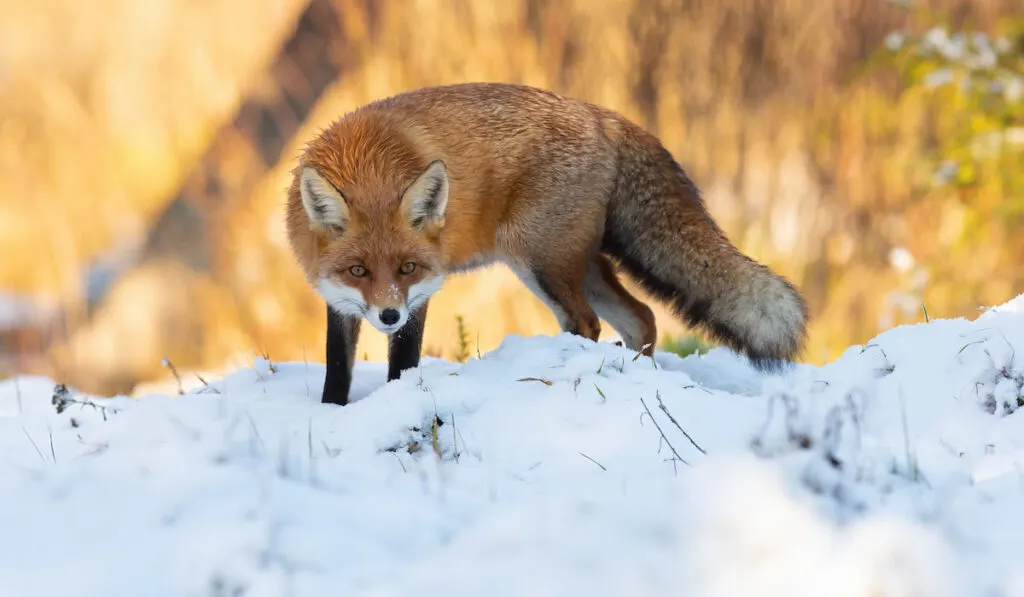
Have you ever heard the saying “appearances can be deceiving”? Well, that’s what foxes are.
Although foxes may appear cute and adorable, these cunning animals can group together and take a single adult pig easily.
There are many species of foxes, but only red and gray foxes have been recorded to attack pigs. Foxes usually target piglets and small pigs. These animals are stealthy enough to sneak and pounce on their prey, especially at night.
Unlike adult pigs, piglets are still inattentive to their surroundings. Hence, they are much more vulnerable to attack by foxes.
Foxes are also intelligent creatures. They can find a way to sneak into protected and guarded areas to attack domesticated piglets and pigs.
15. Cougars
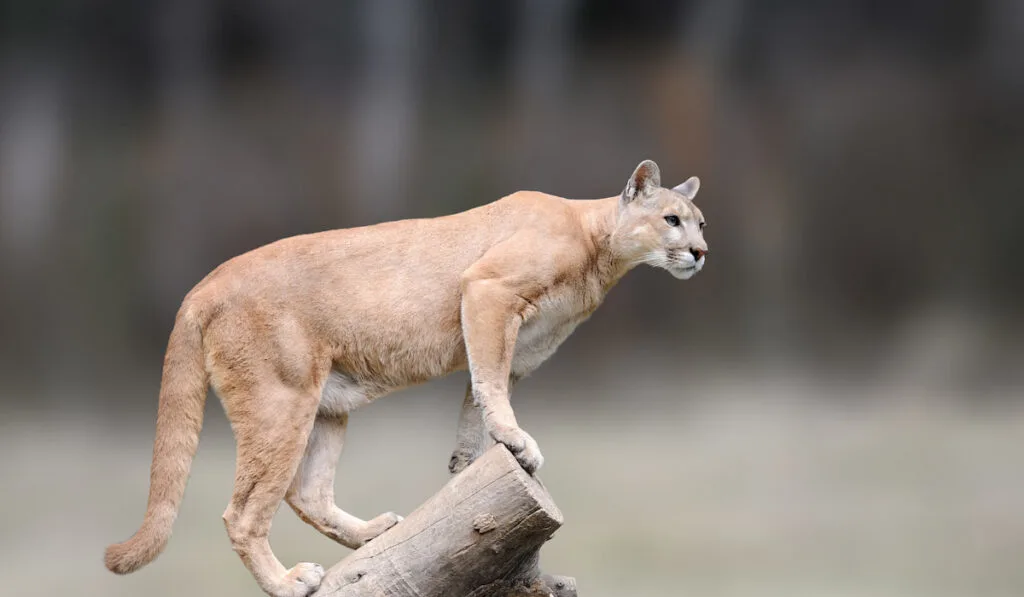
Cougars are native to the Americas. They are also called mountain lions, pumas, catamounts, and panthers.
These large cats are skillful predators that hunt effectively during the night. In the wild, wild hogs are an easy target for these stealthy predators.
With their agile bodies, strong jaws, and sharp claws, cougars can pounce, bite, and tear the flesh of hogs effortlessly. Most of the time, these carnivores aren’t choosy. They will hunt and kill any type of hog, regardless of their size and age.
Once their targets are seriously injured or dead, cougars will drag their prey’s body to a secluded place and cover them with dried leaves. This method is effective in keeping the carcasses fresh while avoiding other animals from stealing or devouring their hard-earned catches.
16. Humans
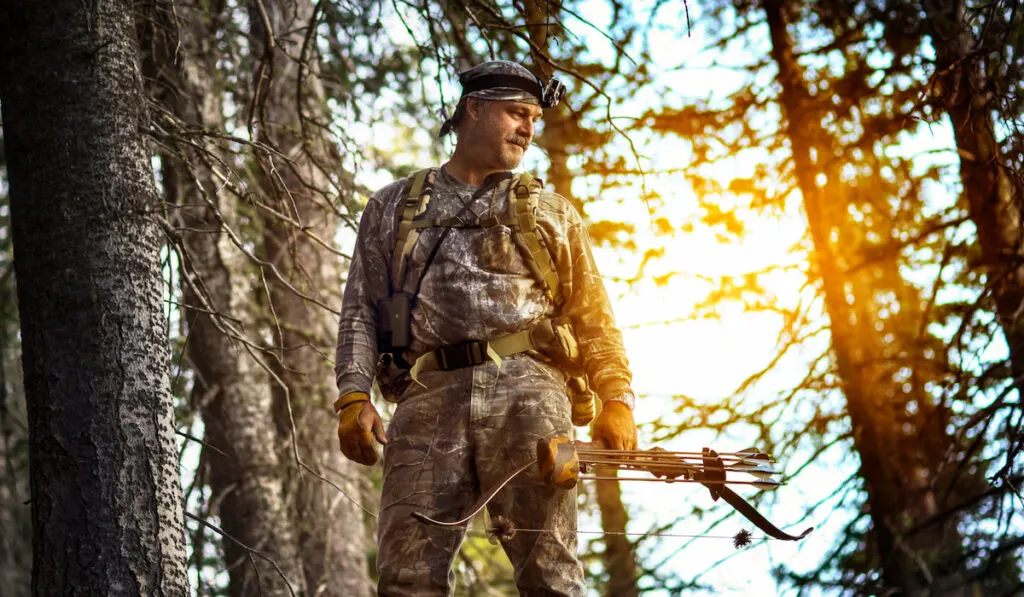
Last but not least, humans are also responsible for hunting and killing pigs. All over the world, these mammals are primarily raised for their meat. Be it homesteading or large-scaling farming, they are grown, sheltered, fed, and butchered to meet consumer demands for swine meats.
In some cases, hog hunting is encouraged by certain people or states to prevent these wild animals from destroying their farms and environment.
In addition, authorities have set some regulations for hog hunters to comply with, in case their activities can threaten the dynamics of the local ecosystem.
For instance, hog hunting is illegal in Arizona and Alaska due to the low population of wild and feral hogs, whereas in Alabama, licensed hunters are free to carry out their activities due to the fairly high number of wild hogs in their habitat.
Final Thoughts
With the exception of domesticated pigs that mostly depend on their breeder’s action to guard the perimeter properly, wild pigs can certainly defend themselves with their sharp tusks.
If push comes to shove and they can’t handle the attacks, these mammals are agile and fast enough to flee and escape danger most of the time. Luckily for them also, they also have thick skin. Hence, it might take some time and extra force for their predators to bite and rip their flesh open.
Resources
- https://aqua4nations.com/farm-business-ideas/pig-predators/
- https://factsking.com/animal-facts/pig-predators/
- https://petpigworld.com/how-do-pigs-protect-themselves-from-predators
- https://feralhogs.extension.org/natural-predators-of-feral-hogs/
- https://encyclopedia.pub/entry/10811
- https://www.reddit.com/r/megafaunarewilding/comments/ku5o9z/jaguars_and_wolves_are_essential_for_reducing_the/
- https://www.thefirstnews.com/article/video-of-wild-boar-fending-off-bloodthirsty-wolf-pack-goes-viral-as-viewers-flood-internet-with-support-for-the-pig-35327
- https://www.nationalgeographic.com/animals/mammals/facts/coyote
- https://www.toledoblade.com/local/2014/03/14/Coyotes-often-kill-livestock-may-have-attacked-local-pigs/stories/20140314070
- https://a-z-animals.com/blog/what-do-lions-eat-15-animals-they-hunt/
- https://www.beaumontenterprise.com/lakecaster/article/Bear-Vs-Boar-Which-Is-The-Top-Predator-16751303.php
- https://www.awf.org/wildlife-conservation/hyena
- https://en.wikipedia.org/wiki/Striped_hyena
- https://www.ncbi.nlm.nih.gov/pmc/articles/PMC7417253/
- https://seaworld.org/animals/all-about/tiger/diet/
- https://a-z-animals.com/blog/what-do-tigers-eat/
- https://education.nationalgeographic.org/resource/eye-leopard
- https://feedingnature.com/what-do-leopards-eat/
- https://www.nytimes.com/2022/08/15/science/invasive-species-pigs-crocodiles.html
- https://www.captainjacksairboattours.com/2-whats-the-difference-between-alligators-and-crocodiles
- https://www.deseret.com/1994/7/1/19117660/bald-eagles-dine-on-pork-annoy-farmer
- https://onekindplanet.org/animal/eagle/
- https://www.allaboutbirds.org/guide/Bald_Eagle/overview
- https://www.wildliferescueleague.org/animals/the-bobcat-master-of-the-art-of-concealment
- https://www.ncbi.nlm.nih.gov/pmc/articles/PMC5082306/
- https://www.wildlifeonline.me.uk/animals/article/red-fox-diet-pets-livestock
- https://www.adoptananimalkits.com/advocate/wild-animals/params/post/1288419/ocelots
- https://kids.nationalgeographic.com/animals/mammals/facts/ocelot
- https://www.nwf.org/Educational-Resources/Wildlife-Guide/Mammals/Mountain-Lion
- https://mountainlion.org/about-mountain-lions/frequently-asked-questions/
- https://backfire.tv/best-states-for-hog-hunting/
